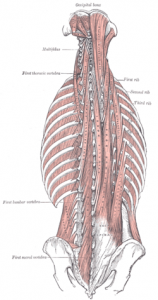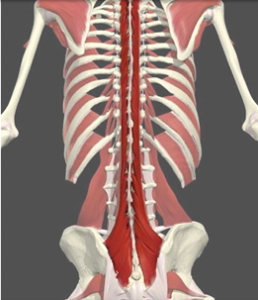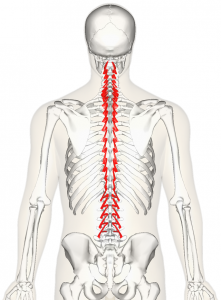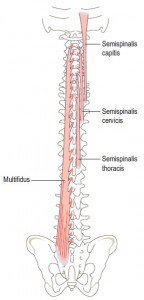 There are three layers of muscle on the back of the body that are associated with the spine and stretch from the pelvis to the head.
There are three layers of muscle on the back of the body that are associated with the spine and stretch from the pelvis to the head.
These deep muscles of the spine are largely responsible for maintaining posture and moving the spine. From my humble perspective few of these muscles are being accessed successfully.
If you are familiar with what I am on about, my take is that everyone habitually leans backwards through life.
This tends to result in overly short muscles on the back and muscles that are too long at the front.
The spinal muscles that I am writing about today are grouped in layers as deep, intermediate and superficial. The deepest muscles are closest to the spine.
These deep muscles of the spine while not all connected to each other tend to work in a chain.
Poor posture often result in a broken chain where misalignment in on area affects the whole. These muscles follow different patterns of attachment with some crossing one vertebra and others crossing two or more, though none cross more than six.
So let’s get on to exploring the deep layer of spinal muscles.
Multifidus are short, thin triangular muscles that provide essential support and stability for the spine.
Running from the sacrum to the axis, or second cervical vertebrae, and attaching to the spinous process of each vertebra, these muscles when toned properly support the spine to reduce degeneration which troubles so many people as we age.
They help to take pressure off the discs of the spine allowing the weight of the upper body to be successfully distributed along the spine. The muscles above the multifidus keep the spine straight while these deep muscles help with the spine’s stability.
The multifidus lie under three of our four abdominal muscles (not the rectus abdominis at the front) as well as the erector spinea (post coming soon).
- Rotatores
The rotatores muscles lie beneath the multifidus and run up and down the entire spine though they are most present in the thoracic region. These are very small muscle with a quadrate shape.
There are eleven of these muscles on either side of the spine originating from the transverse processes of one vertebra and moves up to insert into the spinous process of one of the next two vertebra.
These muscles, along with the multifidus and the semispinalis (which follows below), allow for spinal rotation and extension of the spine.
And as they follow the whole length of the spine, the rotatores are also involved with our proprioception, or the sense of where we are in space.
- Semispinalis
The semispinalis are located on the sides of the spine and can be divided into three different muscles.
- semispinalis dorsi.
- semispinalis cervicis
- semispinalis capitis.
The semispinalis dorsi and semispinalis cervicis assist in the extension and rotation of the spine. The highest muscle, the semispinalis capitis also helps to bend the head.
These muscles attach on the transverse processes (the bony projections on the spine of each vertebra) of the lower vertebrae and reach up and across several vertebrae to attach again farther up.
Of the muscles covered in this post, only semispinalis capitis connects somewhere other than the spine, as it inserts on the occipital bone of the cranium.
These three muscle groups comprising the deep muscles of the spine form the transversospinalis, essentially tie the spine together in many different patterns, connecting the transverse processes to the spinous processes in an assortment of ways.
Together they have an influence on stability, movement and proprioception.
The most important thing to note about these muscles though is that even though they are individual muscles they essentially form a chain that requires each and every link to be active and participating for them all to work.
Poor posture, especially in the form of leaning backwards, makes getting all of these muscles to work together as a team a very difficult proposition.
***



